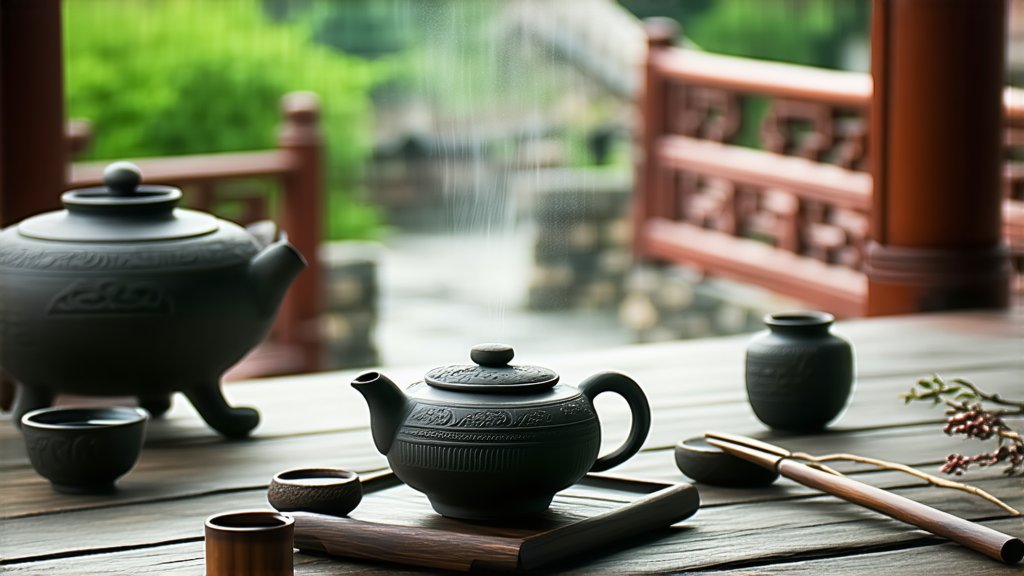
Liu Bao tea, a unique variety of Chinese black tea, has captivated tea enthusiasts for centuries with its rich history, distinctive flavors, and numerous health benefits. In this comprehensive exploration, we delve into the origins, varieties, meticulous craftsmanship, and the art of appreciating Liu Bao tea.
Historical Background
The story of Liu Bao tea begins in the Guangxi province of China, where it has been cultivated and consumed for over two centuries. Its name, "Liu Bao," translates to "Six堡," referring to the six fortified towns that were once significant trading hubs in the region. This tea was highly prized during the Qing Dynasty and became a popular choice among the imperial court and common folk alike. Over time, Liu Bao tea gained international recognition, particularly in Southeast Asia, where it was known as "Brick Tea" due to its traditional pressed form.
Varieties of Liu Bao Tea
Liu Bao tea comes in several distinct varieties, each with its own unique characteristics:
-
Raw Liu Bao (Sheng Liu Bao): This type undergoes minimal processing and is aged naturally over time. It retains a more robust and earthy flavor profile, which evolves as it ages.
-
Ripe Liu Bao (Shou Liu Bao): This variety is subjected to a post-fermentation process called "wet piling," which accelerates the aging process. Ripe Liu Bao is known for its smoother, mellower taste and deeper color.
-
Compressed Liu Bao: Traditionally, Liu Bao tea is often compressed into various shapes such as bricks, cakes, or tuochas (smaller cakes). Compression helps preserve the tea and allows it to age more evenly.
-
Aged Liu Bao: The aging process is crucial for developing the complex flavors and aromas of Liu Bao tea. Aged Liu Bao can be enjoyed after several years, with some varieties being matured for decades.
The Craftsmanship of Liu Bao Tea
The production of Liu Bao tea is a meticulous process that involves several stages:
-
Plucking: Only the top one or two leaves and buds are handpicked during the optimal harvesting season, typically in spring or autumn.
-
Withering: The freshly plucked leaves are spread out to wither under the sun or in a controlled environment, reducing moisture content and softening the leaves.
-
Fixation: The withered leaves are then fixed by either pan-firing or steaming to halt oxidation and preserve the green qualities of the tea.
-
Rolling: The fixed leaves are rolled to break down cell walls and release juices, enhancing the flavor and aroma.
-
Fermentation (for Ripe Liu Bao only): For ripe Liu Bao, the rolled leaves undergo a wet piling process, where they are piled together in a humid environment to encourage microbial activity and fermentation. This can take several weeks to months.
-
Drying: After fermentation (if applicable), the leaves are dried to further reduce moisture content and stabilize the tea.
-
Aging: The final step involves aging the tea in controlled environments, allowing it to develop its signature flavors and health benefits over time.
Appreciating Liu Bao Tea
Appreciating Liu Bao tea is an art form that combines sensory experience with cultural tradition. Here are some tips for savoring this exquisite tea:
-
Preparation: Use a Yixing clay teapot or a Gaiwan (a traditional Chinese lidded bowl) for brewing. These vessels help enhance the flavors and aromas of the tea.
-
Water Quality: Use fresh, filtered water heated to around 95-100°C (203-212°F). Good quality water is essential for bringing out the best in Liu Bao tea.
-
Leaf-to-Water Ratio: Typically, use about 5 grams of Liu Bao tea per 150 ml of water. Adjust according to personal preference.
-
Steeping Time: The first infusion should be shorter, around 10-15 seconds, to cleanse the leaves. Subsequent infusions can be longer, gradually increasing by 5-10 seconds each time.
-
Multiple Infusions: Liu Bao tea is known for its ability to withstand multiple infusions, each revealing different layers of flavor and complexity. Enjoy up to 8-10 infusions from a single serving.
-
Observation: Pay attention to the tea's appearance, aroma, taste, and mouthfeel. Notice how the tea evolves with each infusion and appreciate the subtle changes in flavor and texture.
Health Benefits of Liu Bao Tea
Beyond its delightful taste, Liu Bao tea offers numerous health benefits:
-
Digestive Aid: The fermentation process produces beneficial enzymes that aid digestion and promote gut health.
-
Weight Management: Liu Bao tea has been shown to help with weight loss by boosting metabolism and reducing fat absorption.
-
Antioxidant Properties: Rich in polyphenols, Liu Bao tea helps combat oxidative stress and supports overall cellular health.
-
Cardiovascular Health: Regular consumption may help lower blood pressure and improve cholesterol levels, contributing to heart health.
-
Immune Support: The tea contains compounds that strengthen the immune system, helping the body fend off illnesses.
In conclusion, Liu Bao tea is not just a beverage; it is a cultural treasure that encapsulates centuries of tradition, craftsmanship, and wellness. Whether you are a seasoned tea connoisseur or a curious newcomer, exploring the world of tea, Liu Bao offers a profound and enriching experience that transcends time and borders.